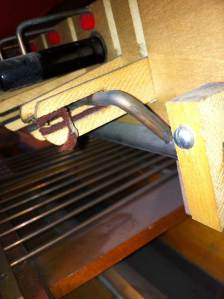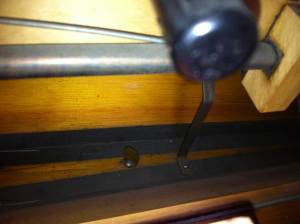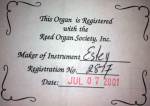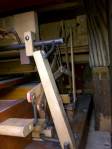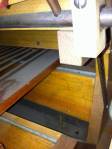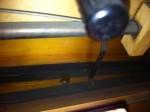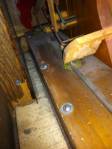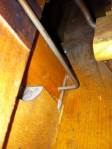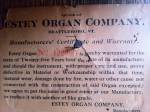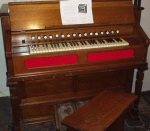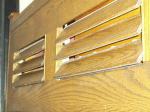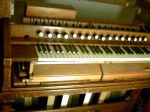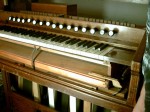I inspected the Estey Artists organ for the first time today – just a cursory once-over and a little cleaning. I removed the fallboard, keyslip, and the two back panels. The back of this organ is finished, like a chapel reed organ. It has three swell louvers at the top of the back. At that point, I could see enough of the organ as to get an impression of what I’m in for as I plan to restore it. I was surprised to see that someone already registered the organ with the Reed Organ Society, as I discovered a paper label under the key desk that said: “This organ is registered with the Reed Organ Society, Inc., Registration Number 2817, July 7, 2001.” I encourage anyone with an interest in reed organs to join this organization. They produce a very nice full color quarterly journal and you get access to incredible expertise from people who are knowledgable about restoration and playing reed organs.
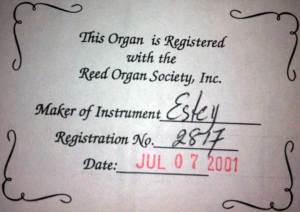
I soon discovered that the organ contained a lot of cat or dog hair, which I carefully vacuumed away where possible. Other than this, the organ is not extremely dirty, but because of the condition of the felt and the leather, I’ve decided to do a complete rebuild. I noticed that the felts do not have much integrity. Much of the felt showed obvious signs of being moth-eaten, some significant, while other portions were disintegrating for whatever reason.
The tacks holding the exhauster valves in place are corroded and I will have to resolve that problem. Also one of the exterior exhauster valves is bad, so I will likely replace all of them.
This organ has an incredibly large number of reeds for its relatively compact size. It appears that the 16′ Clarinet and the 4′ Flute are located at the front of the organ underneath the keyboard. There are two independent sections of reeds at the back of the organ – one in the middle and another at the extreme back end. The two sections face each other.
Someone unfortunately did a number on the Vox Humana. Apparently it was leaking and some enterprising soul decided to use silicone caulk to try to seal it against the foundation board. This is going to be a real pain to clean up and fix. The correct way to resolve the problem would have been to use hide glue with a leather gasket between the Vox Humana and the base.
I was shocked to see that the Estey Company warranted the product for 25 years! How many products from today have warranties as good as that! Here are some other pictures I took today.
